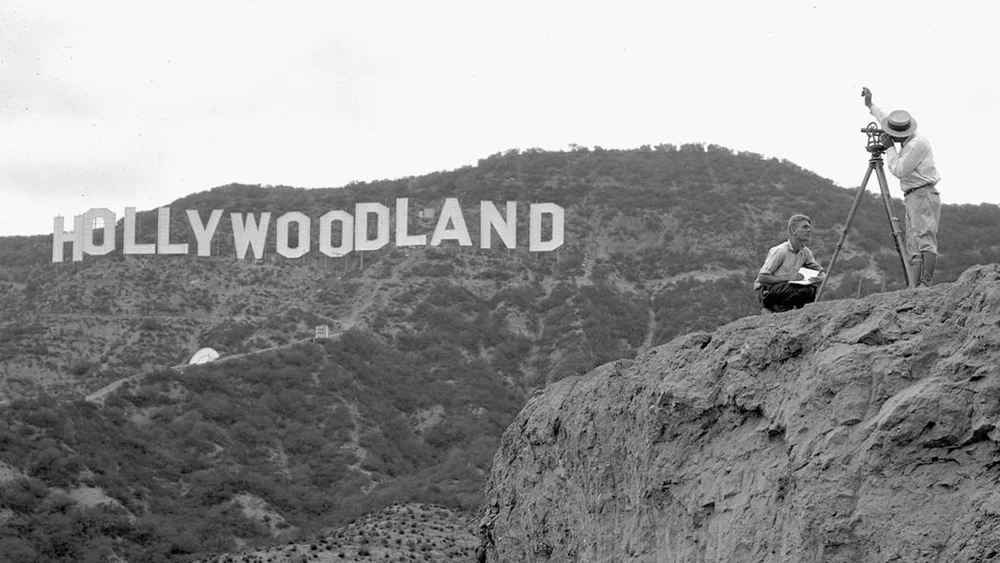
Long before studios started popping up all over Los Angeles and Hollywood, the landscape includes rolling fields and orchards. It’s a place that would be unrecognizable today, and I’m sure that it was a beautiful sight to see.
Hollywood was officially established in 1853, and it included only a single adobe hut on land outside Los Angeles, California. By the 1870s, growing crops was a big and successful business and it was a thriving agricultural community.
According to Hollywood History, Hollywood got its name came from Daeida, the wife of real estate tycoon, Harvey Henderson Wilcox, who moved to Los Angeles from Topeka, Kansas, in the 1880s. He bought 160 acres of land west of Los Angeles. While on a train trip east, Daeida met a woman “that described her country home in Ohio, that had been named for the Dutch settlement of Hollywood. Liking the name, Daeida christened their ranch ‘Hollywood,’ upon her return.”
The first street in Hollywood was named Prospect Avenue, but was later changed to Hollywood Boulevard, where city lots were carved out around dirt avenues and pepper trees. By the early 1900s, there was a population of 500 people, a post office, a newspaper, a couple of markets, and The Hollywood Hotel was built.
It was around this time that movie-making studios started populating the area. The reason filmmakers started making their way out to Hollywood was to get away from Thomas Edison and his Motion Picture Patents Company in New Jersey. You see, Edison imposed strict rules on his filmmaking technology and independent filmmakers were constantly being sued by Edison to stop their productions for breaking his rules. They wanted to escape his iron fist. The area also had great weather conditions for shooting films and lots of beautiful scenery.
As more and more people were traveling to Hollywood for new beginnings and to achieve their dreams, the locals who settled on the land long before, were not happy with the new growing community and they shunned them, and even included signs outside of shops and other establishment saying "No Dogs or Actors Allowed." There was a lot of anger directed towards the recognizable stars of the industry.
Hollywood: Legend And Reality explained: “Why Hollywood? The Pioneers were drawn to Southern California by the promise of cheap labor, spectacular locations, and a benign climate…The pioneers were a tough breed, unfazed by physical hardship, rattlesnakes, and gun-toting rivals.”
It goes on to explain: “Crude studios and outdoor sets were thrown up over a 300-square-mile area from 1908 on. Hollywood—then a bucolic settlement of 5,000—became the principle focus. It was conveniently close to the hills and to downtown L.A., but its first settlers—staid Midwesterners who had outlawed saloons and theaters—were unfriendly. Recalled pioneer director Allan Dwan: ‘We were beneath them. If we walked in the streets with out cameras, they hid their girls under their beds, closed doors and windows, and shied away.’ ‘No dogs, no actors,’ read a sign at the Hollywood Hotel.”
Regardless of the local hate, people just kept showing up and Hollywood became the place to be if you wanted to get into the movie business. Some of those early silent movie era actors included Gloria Swanson, Mary Pickford, Clara Bow, John Barrymore, Buster Keaton, Charlie Chaplin, Rudolph Valentino, Lon Chaney, Sr., Harold Lloyd, and more.
إرسال تعليق